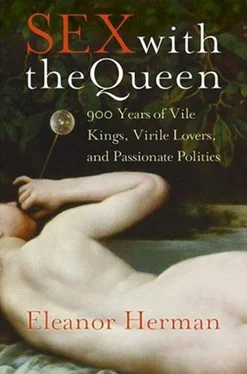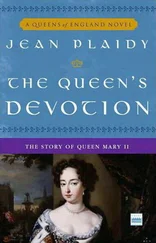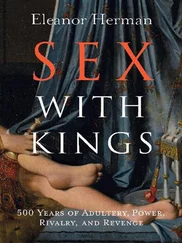Many European princes were gay, yet this did not prevent them from fulfilling their marital duties. Married in 1308 to a French princess, the English king Edward II fathered four royal children, although he spent most of his life in love with other men.
The transvestite Philippe, duc d’Orléans, launched six children into the world with two wives, although the clanking saints’ medallions he tied to his private parts before the act may have helped. In 1614 James I of England fell head over heels in love with young George Villiers; the king made him master of the horse, an earl, a marquess, a duke, and lord high admiral. Yet James could proudly point out that he had made his wife, a Danish princess, pregnant no less than nine times.
But not all gay princes could force themselves to have sex with their wives. Gustavus III of Sweden was so disgusted at the thought of sex with a woman that he didn’t even want to try. “This prince did not pay homage at the shrine of Venus” was the polite explanation of a contemporary. 23Nonetheless, he married Princess Sophia Magdalena of Denmark in 1766. When a Swedish artist visited the Copenhagen court of Christian VII in 1769, the king asked after the health of his sister. “She was as happy as any woman who had been married nearly three years and yet remained a virgin” was the reply. 24
Yet the queen’s barrenness was a perplexing problem to Gustavus who urgently needed an heir to stabilize his tottering throne. Powerful nobles, stripped of their rights by the king, threatened rebellion, and it was easier to topple a monarch without an heir. Rumor had it that after eleven years of marriage, the king hit upon an excellent idea.
He had seen his neglected virgin queen exchanging glances with a sophisticated courtier, Count Adolph Frederick Munck. According to the story that raced like wildfire through the Swedish court—the king insisted that the two begin an affair. When they hesitated—such treason could result not only in dishonor but also in dismemberment—Gustavus wrote down his request in his own hand and gave both his wife and the count a copy. It was also rumored that his wife, though acting the role of queen until her death, insisted upon a quiet divorce and immediately married Count Munck so no charge of treason could be preferred against her if the king changed his mind.
Within a year after her reported liaison with Count Munck began, Sophia Magdalena gave birth to the future Gustavus IV. The king was absolutely delighted to have an heir—apparently without soiling himself in bed with a woman—and attended council meetings with his wife’s illegitimate child sitting on his shoulders.
Frederick the Great of Prussia, the most renowned warrior king of Europe, was haunted by rumors of his bisexuality after his father chopped off the head of the man who supposedly seduced him as a teenager. Whether Frederick had sex with men is not entirely certain. What is certain is that in 1733 the nineteen-year-old prince was horrified to learn that his father insisted he marry a dumpy German princess, Elizabeth of Brunswick-Bevern. “I have always wanted to distinguish myself by the sword and have not wanted to obtain royal favor by any other means,” the crown prince huffed. “Now I will have only the duty to fuck. I pity this poor person, for she will be one more unhappy princess in the world.” 25
“I believe that anyone who allows himself to be bossed by a woman is the biggest asshole in the world and unworthy of being called a man,” he added. “Love can never be forced. I love sex but in a very fickle way; I like the immediate pleasure, but afterward I despise it. Judge then if I am the stuff from which one makes good husbands…. I shall marry, but after that, goodbye and good luck.” 26
After a few halfhearted attempts at lovemaking produced no pregnancy, when Frederick became king he stuck Queen Elizabeth in a country house where she grew fat, raised dogs, and tried to make do with the pitiful allowance he sent her; for his part, he returned to his favorite pastimes of waging war and playing the flute. Out of respect, however, Frederick kindly arranged to have dinner with his wife once a year.
Royal children belong not to their parents but to the state. Until the twentieth century, a royal mother was not permitted to nurse her children or to have much say in their education or even in their marriages.
In September 1754 the future Catherine the Great finally gave Russia its longed-for heir, Paul. Empress Elizabeth scooped up the infant gleefully and raced away with him, courtiers running behind her. Catherine was left alone with a servant woman who refused to change her sticky bloody sheets or get her a glass of water, fearing the empress might disapprove. Catherine was not permitted to see her child or even ask after him, as that would imply she did not trust the empress to provide adequately for him. By the time Catherine became empress in her own right in 1762, she and Paul were strangers and soon found they heartily detested each other.
Marie, crown princess of Romania, was forbidden by her husband’s uncle, King Carol I, to nurse her first child, Prince Carol, despite her repeated pleas. Carol’s wife, Queen Elizabeth, who despised Marie, hired a bone-dry German governess named Miss Winter to turn young Prince Carol against his mother. Miss Winter forced the prince to drop his mother from his nightly prayers and even barred the door to Carol’s sickroom when he was deathly ill until Marie rudely shoved her out of the way. When Carol was in his early teens, his tutor had homosexual designs on him and may have seduced him. His mother could do nothing. “I could never get my own child without scenes and explanations,” Marie lamented to a relative. 27
Similarly, Elizabeth Charlotte, duchesse d’Orléans, had no control over her children’s education. In 1689 her husband wanted to appoint one of his lovers, the marquis d’Effiat, tutor to their thirteen-year-old son Philippe. But Madame, as she was called, howled in protest, “For there is no doubt that there is no greater sodomist in France than he, and that it would be a bad beginning for a young prince to start his life with the worst debauchery imaginable.” To which her husband gravely replied “that he had to admit that d’Effiat used to be debauched and loved the boys, but that he had corrected himself of this vice many years ago.” 28
Neither did Elizabeth Charlotte have any say in her son’s marriage. In 1692 Louis XIV betrothed her son to Françoise-Marie, Mademoiselle de Blois, his bastard daughter with a mistress. Bristling with pride in her royal birth, Elizabeth Charlotte was devastated at such a misalliance for her only son. “Her figure is all askew,” she reported of her future daughter-in-law, “her face is ugly, and she is unpleasant in everything she does.” 29
The duc de Saint-Simon related that after hearing the news of the betrothal, Madame “was walking briskly, handkerchief in hand, weeping without restraint, speaking rather loudly, gesticulating, and giving a fine performance of Ceres after the abduction of Proserpina…. [The next day Madame’s] son approached her, as he did every day, in order to kiss her hand; at that moment Madame slapped his face so hard that the sound was heard several paces away, which, in the presence of the entire court, deeply embarrassed this poor prince….” 30
Elizabeth Charlotte despised lowborn individuals seeking to ally themselves to those of better birth. For years after her son’s marriage, casting sidelong glances at her daughter-in-law, she muttered, “Mousedroppings always want to mix with the pepper.” 31
Royal children have always belonged to the state and still do. Though modern customs are not nearly as draconian as those of centuries past, even in the 1990s Diana, Princess of Wales, was unable to take her sons on a holiday outside of Britain without the queen’s explicit permission. Indeed, the events that led to her August 1997 death started when she asked to take the boys to visit friends in the United States. Royal permission was withheld for such a distant locale, but it was granted to take her sons on a Mediterranean cruise on a yacht owned by Mohammed Fayed.
Читать дальше












